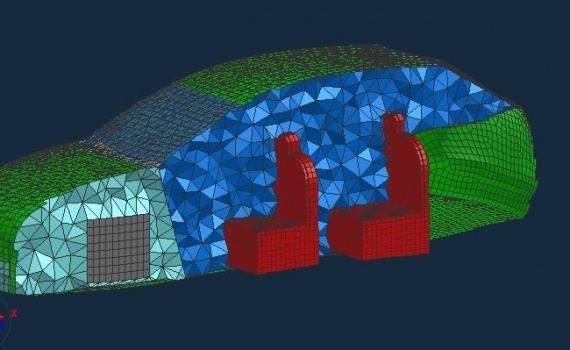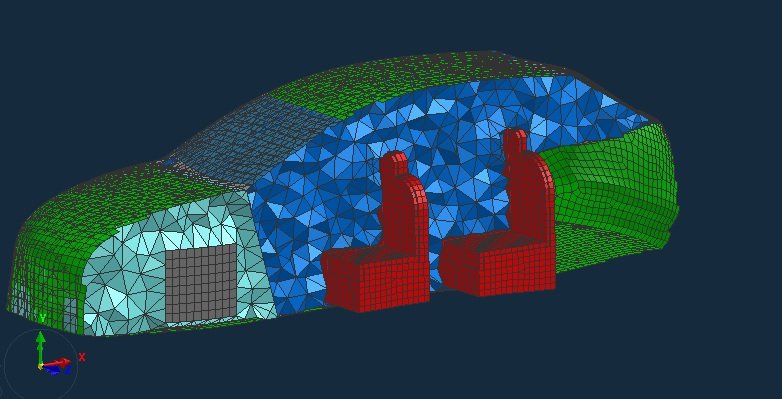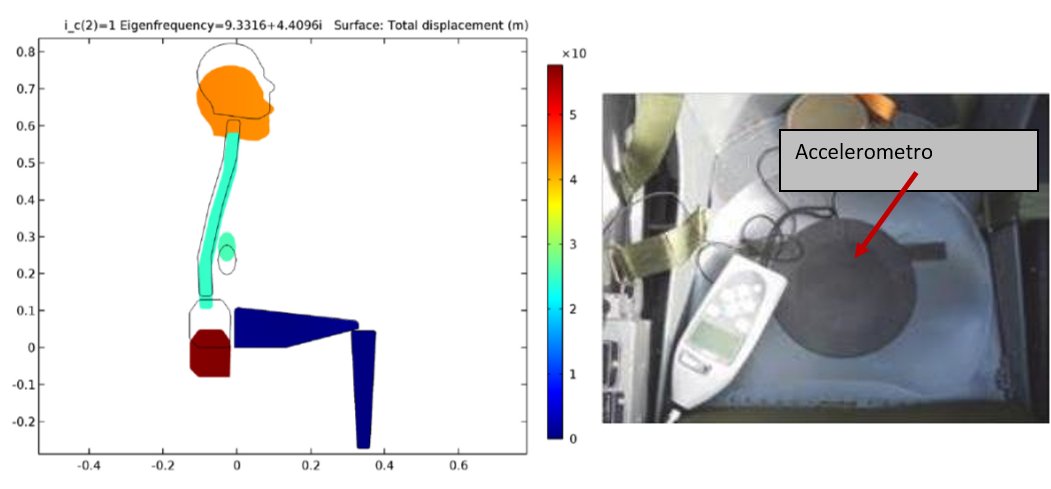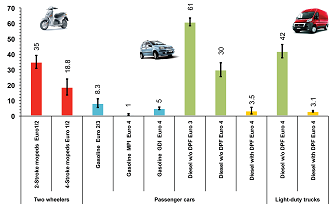National Research Council
Category Archives: [:it]Impatto ambientale dei trasporti[:en]Environmental impact of transports[:]
- 20
Nov 15
-
- 11
Nov 15
-
Characterisation of antropogenic aerosols
The nucleation and growth of antropogenic aerosols are investigated by monitoring the cluster formation from molecular to nanometric dimensions by using mass spectrometry/molecular beam methods. Recent significant findings suggest that carboxylic acid may play a significant role as a pre-nucleation embryos in the formation of aerosols in wet environments (ChemPhysChem 2015, 16, 3021 – 3029).
- 11
Nov 15
-

Vibroacoustics
Activities in Vibroacoustics include numerical simulations through techniques as FEM, BEM, SEA, and multibody simulation of vehicle and subsystems aimed at the optimization of the acoustic and vibration behaviour. Particular attention is paid toward the study of gas-dynamic noise produced by the intake and exhaust systems and the implementation of innovative methods based on auto-regressive mathematical models for knocking identification by using vibrational data acquired on board.
 Numerical simulation of the fluid-structure interaction of a commercial vehicle aimed at the estimation of passengers’ acoustic comfort
Numerical simulation of the fluid-structure interaction of a commercial vehicle aimed at the estimation of passengers’ acoustic comfort
Multibody simulation of an inline 4-cylinder engine

Numerical simulation of a human body vibration with excitation acquired through an accelerometer in a vehicle
- 29
May 13
-
Future Transportation Fuels
Synthesis, Recycling and Combustion of Metallic Nanoclusters
Systematic studies on the feasibility to burn metallic nanoparticles in an engine cycle have been undertaken. The idea lies on two main characteristics: some metal fuels contain two and three times more energy content per unit volume than the conventional liquid fuels while under certain conditions the metal particles could burn in solid state. On the basis of these pre-requisites, such a fuel could feed an engine with very high power density, without the formation of the well-known pollutants derived from the combustion process of the conventional liquid fuels. The combustion product is the respective metal oxide, which by employing suitable and environmental-benign techniques, can be recycled to recover the (reusable) metal fuel. Recent progresses of nanotechnology in the manufacturing of metallic nano-powders with specific tailored characteristics, has opened new scenarios in the exploitation of such novel energy carriers. Moreover, the studies indicated that in the nanoscale regime metal powders, such as iron and aluminium, can burn in timescales comparable with engine cycle and in the solid or liquid state.
In the framework of an FP7 European project, in cooperation with other well recognized European scientific Institutions, in Istituto Motori, studies and experiments are addressed to the investigation on various main aspects:
- Determination of the basic combustion characteristics of metal nanopowders in customized shock-tube system;
- Studies on the feasibility and characterization of metallic nanopowders combustion under real engine conditions, employing prototype research engines;
- Definition of “metal-fuelled” ICE combustion models based on experimental evidences.
- 29
May 13
-

Environment
Road transport contributes significantly to urban air pollution in many countries. Mobile sources produce several important air pollutants, such as air toxics and greenhouse gases.
The most widely used models for the atmospheric emission inventories and scenarios are based on the emission factor approach: for road traffic an emission factor (EF) represents the relationship between the amount of pollution produced and the number of vehicle-kilometer traveled. The assessment of vehicular emission factors includes laboratory studies using chassis dynamometers and emission benches or portable measurement systems (PEMS) with a direct on-board sampling during the real use of vehicle on-road.
Istituto Motori realizes test campaigns (in laboratory and on-road) measuring emissions and fuel economy from different kind of vehicles (cars, buses, light and heavy-duty trucks, mopeds and motorcycles) to evaluate the effect of driving behaviour, road type, load, traffic conditions, engine technology, fuel quality, emission control equipment etc..
Istituto Motori has extensive experience in monitoring micropollutants, such as Polycyclic Aromatic Hydrocarbons (PAH), benzene and Volatile Organic Componds (VOC), particulate matter (PM) and its size fractions.
The fine-particulate fraction (PM2.5) represents a particular health concern because these can penetrate the respiratory system deeply and be absorbed into the bloodstream. Road traffic is an important source of particulate matter, though the proportions vary during the year and from place to place.
Diesel vehicles without Diesel Particulate Filter (DPF) and mopeds present the highest particle mass (PM) and number (PN) emissions and, among mopeds, 2-stroke are more emissive than 4-stroke. The introduction of DPF at diesel exhaust reduces particle emissions by almost two orders of magnitude.
Istituto Motori activity also covers the development and experimental validation of emission factor modelling. A meso-scale emission model, named KEM, Kinematic Emission Model, has been developed; it is located at an intermediate level between models for national or regional inventories and the instantaneous models. The specificity and innovation of this model is in the detailed description of the velocity profile obtained using a multidimensional statistical approach, from an extremely large number of variables that characterize all phases of the vehicle kinematics, much deeper respect to the use as input variable of the mean velocity only.In the frame of the interaction between the combustion process products and the environment further studies are performed aimed to the remote optical multispecies monitoring of emissions and tropospheric pollutants.

